Four
SKIING BECOMES MECHANIZED
The Winter Sports Club of Lisbon have cleared an 800 foot slope with a 200 foot vertical. Lisbon has raised the funds for a ski tow and intends that with this completed all the skier will have to do is ski down the trail—the ski tow will do the rest.
—Ski Bulletin, December 28, 1934.
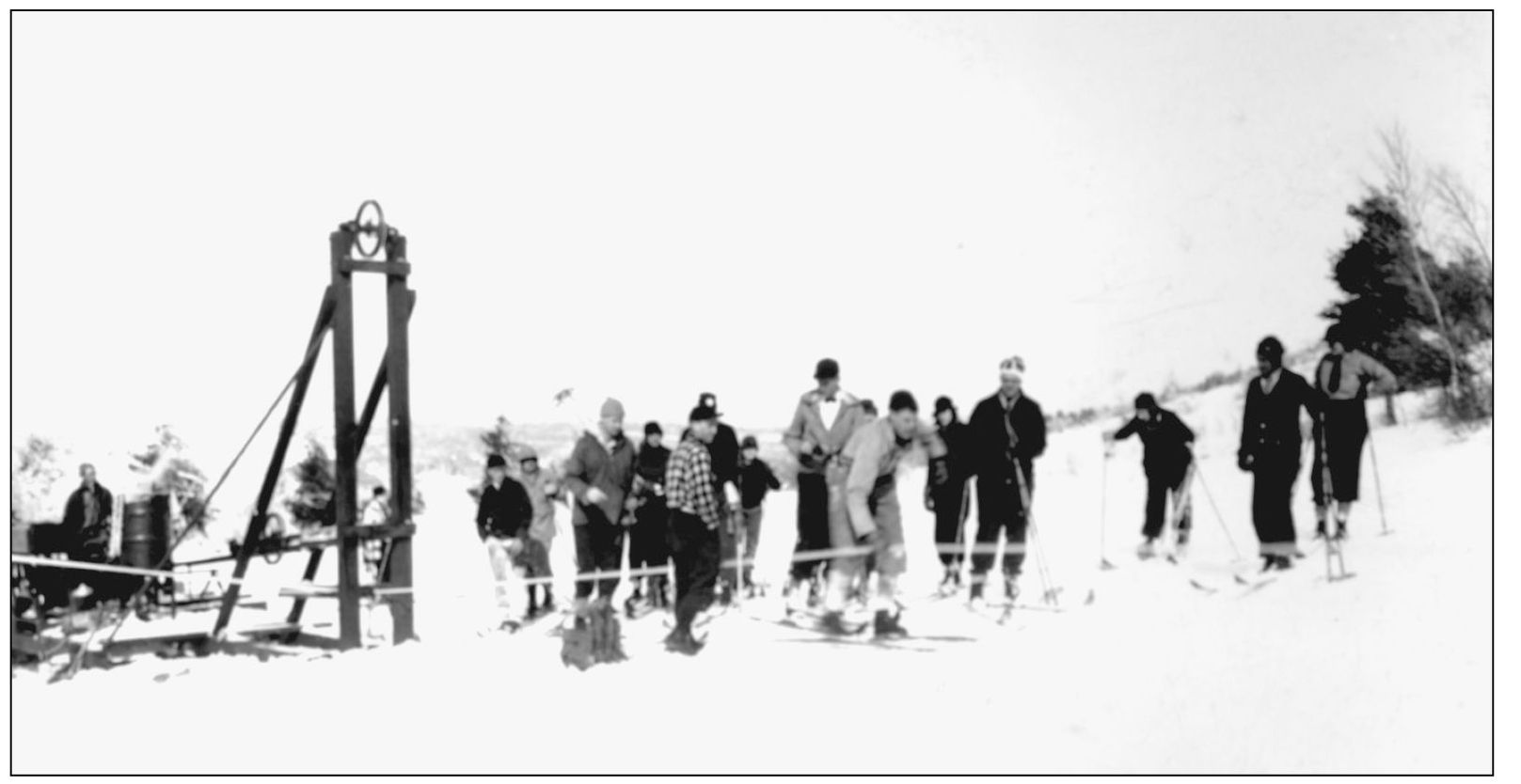
Ted Cooke’s tow is shown here at Mount Rowe (near Gunstock). Rope tows were inexpensive and inefficient at the start, but they were easy to put up. They did, however, provide the answer for instant uphill transportation from 1935 on all over the state.
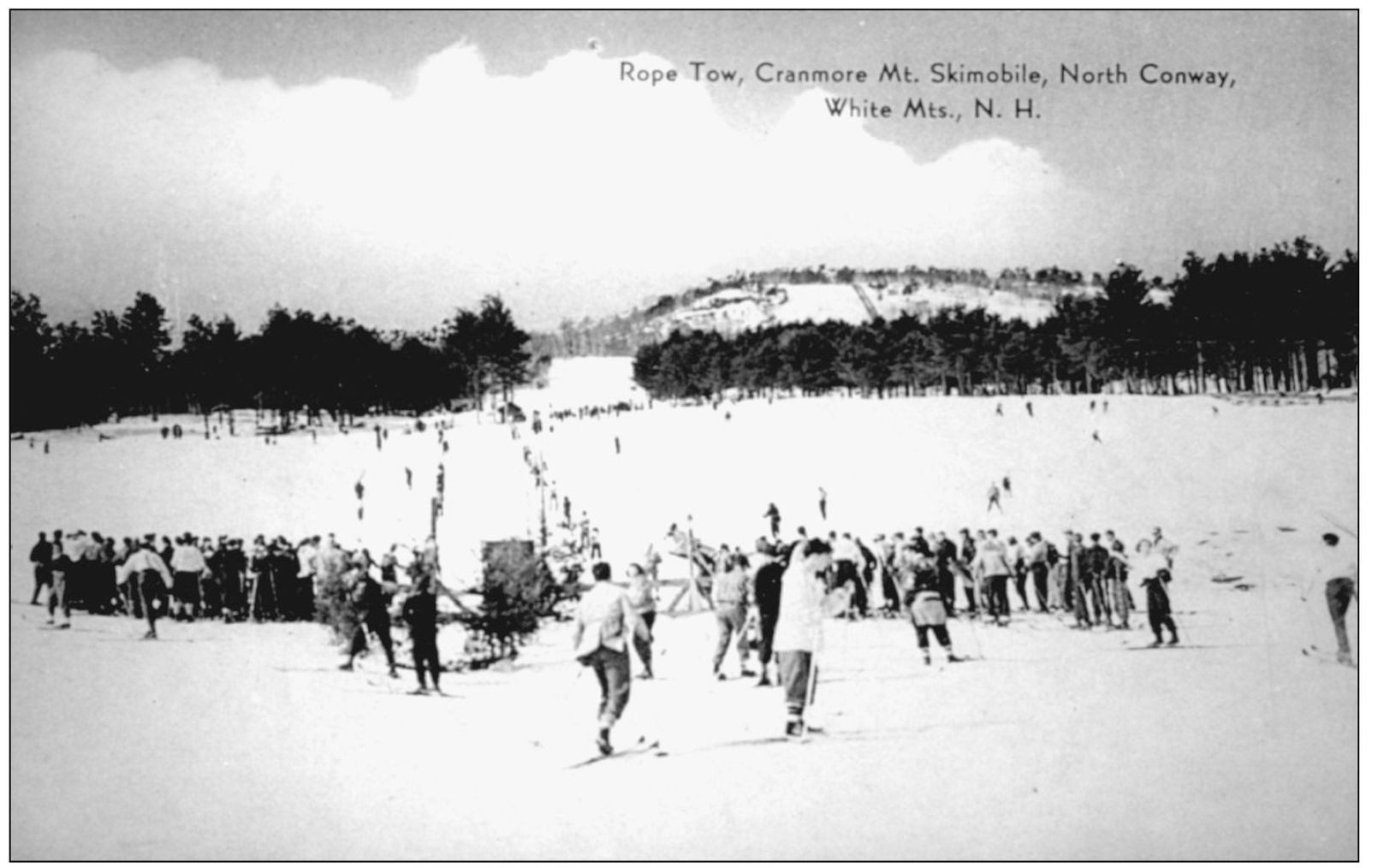
Rope tows, such as this one at Cranmore, often served the easiest slopes. Many people had trouble holding on to an increasingly heavy rope that twisted. No wonder rope-tow grippers were invented.
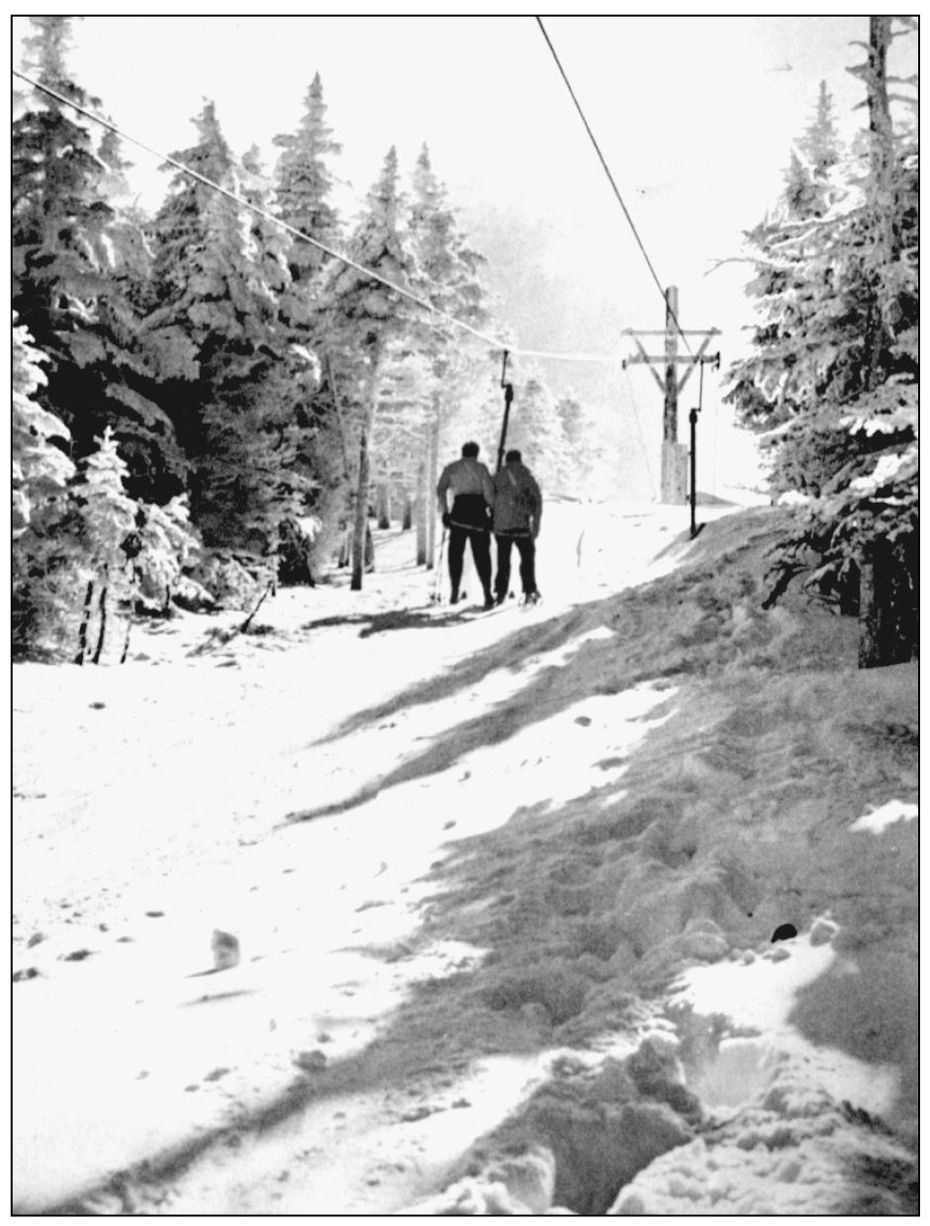
The T-bar, in the early days known as the “he-and-she-stick,” provided a sociable ride up the mountain for skiers while being comparatively cheap for the ski area operator. This one was at Cannon.
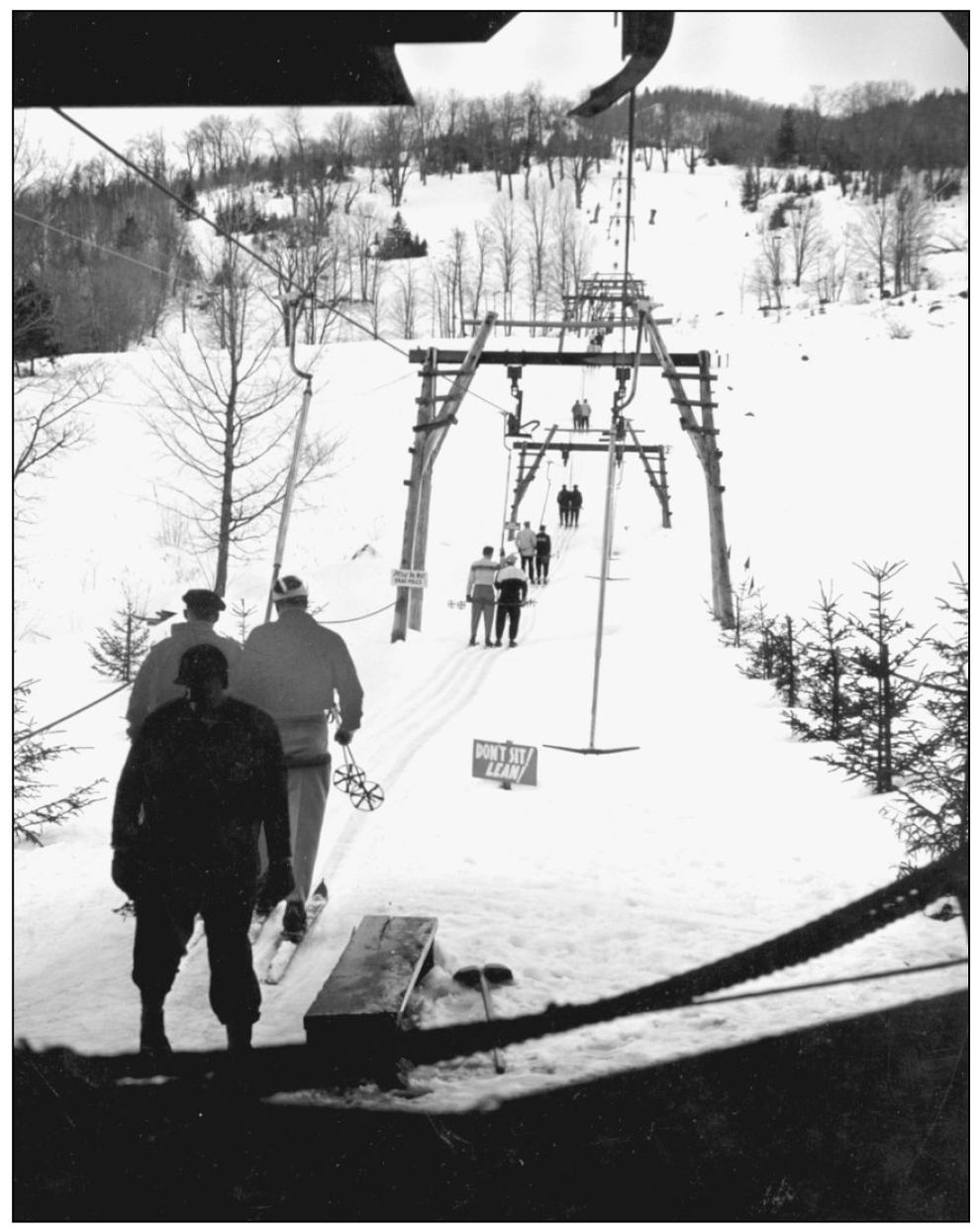
Just like the early rope tows, the first T-bars were made with wooden frames. Patrons had to be instructed how to ride them: “Don’t sit! Lean!”
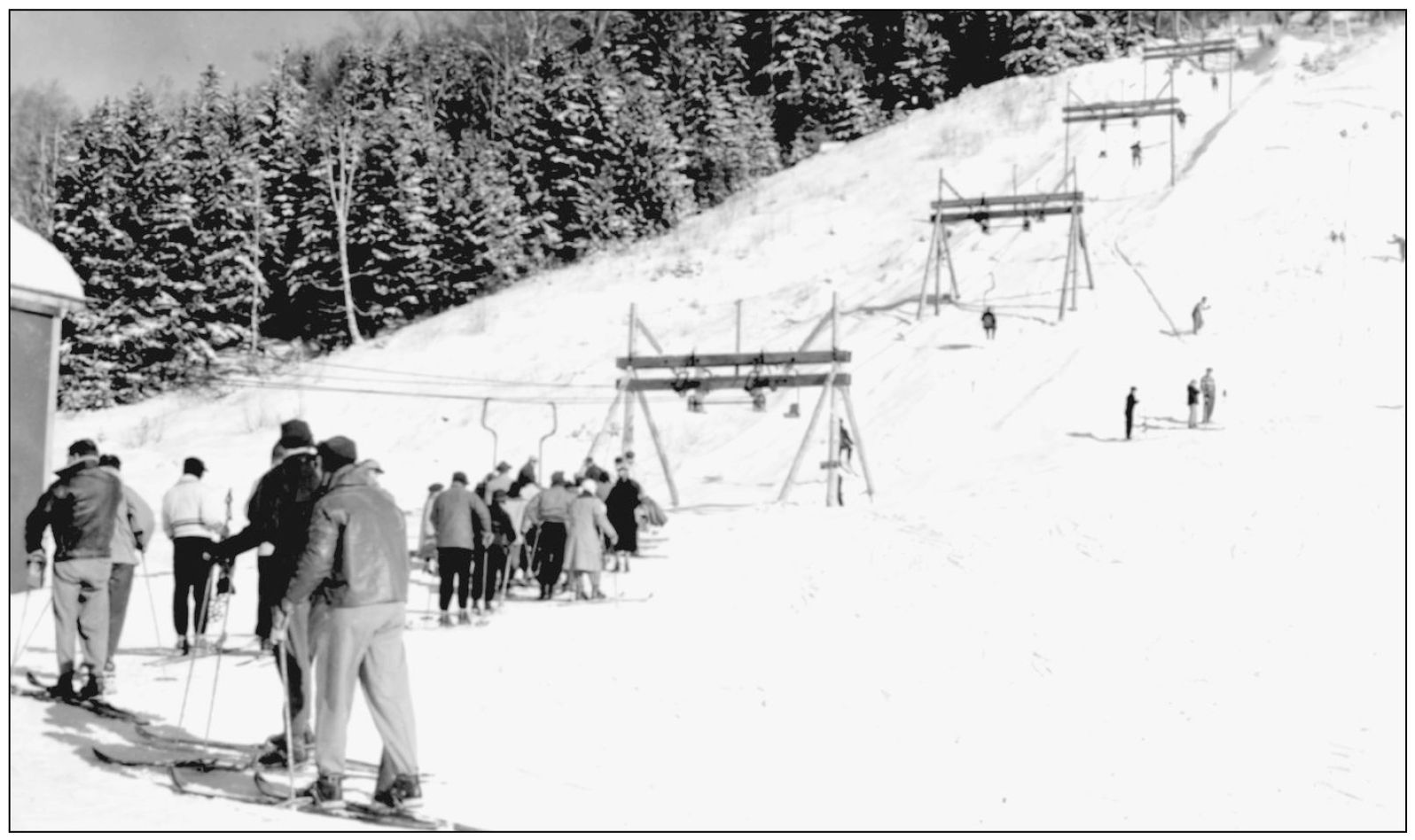
Thorn Mountain’s chairlift was made by Walter Stadig of Soldier Pond, Maine. Here, too, the stanchions are from wood.
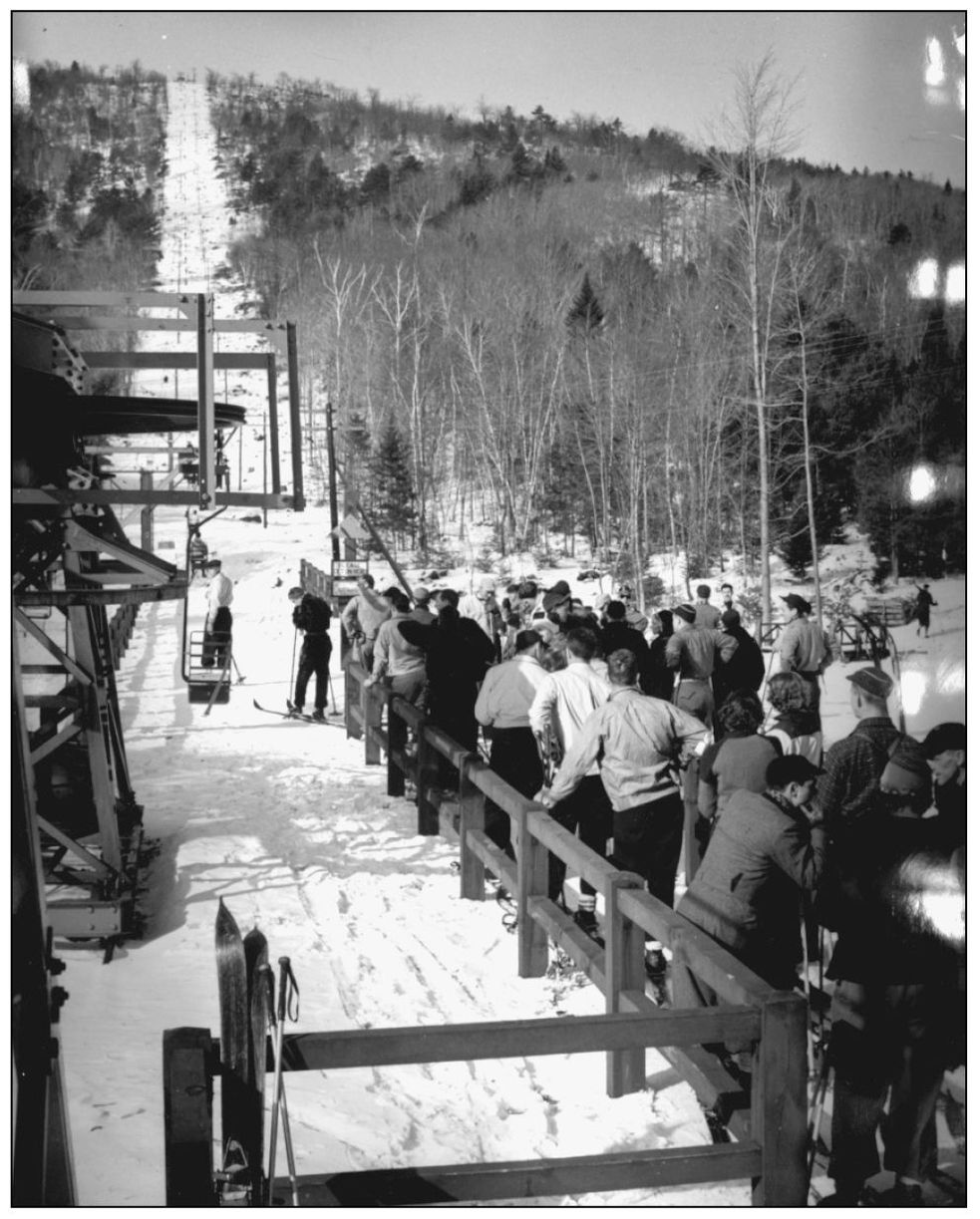
Belknap Recreation Area’s chair tow was in business in January 1938. It was the second in the nation and proved very popular but was comparatively expensive to erect.
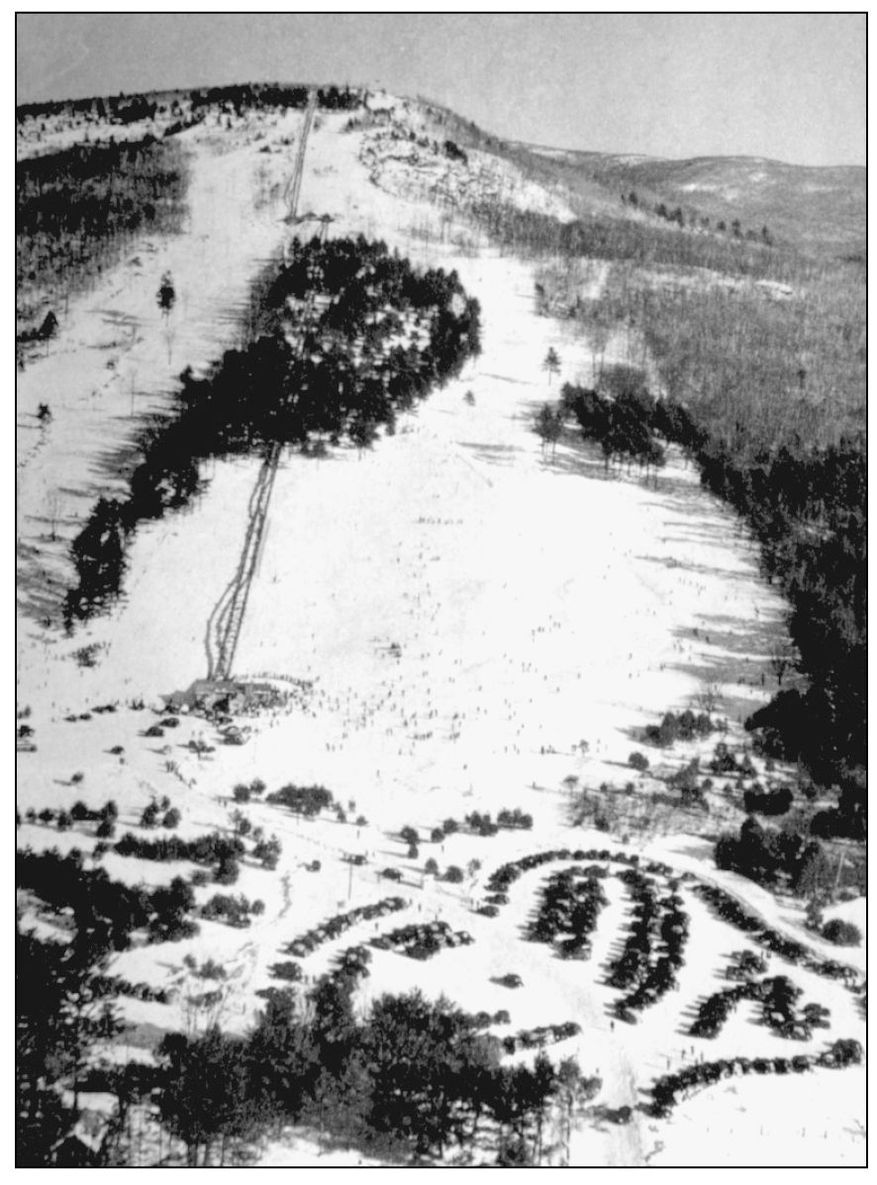
Cranmore’s unique snowmobile also saw service first in 1938 and lasted until 1989. This is a view of the area in 1941. One of the original cars of the snowmobile sits just outside the front door of the New England Ski Museum.
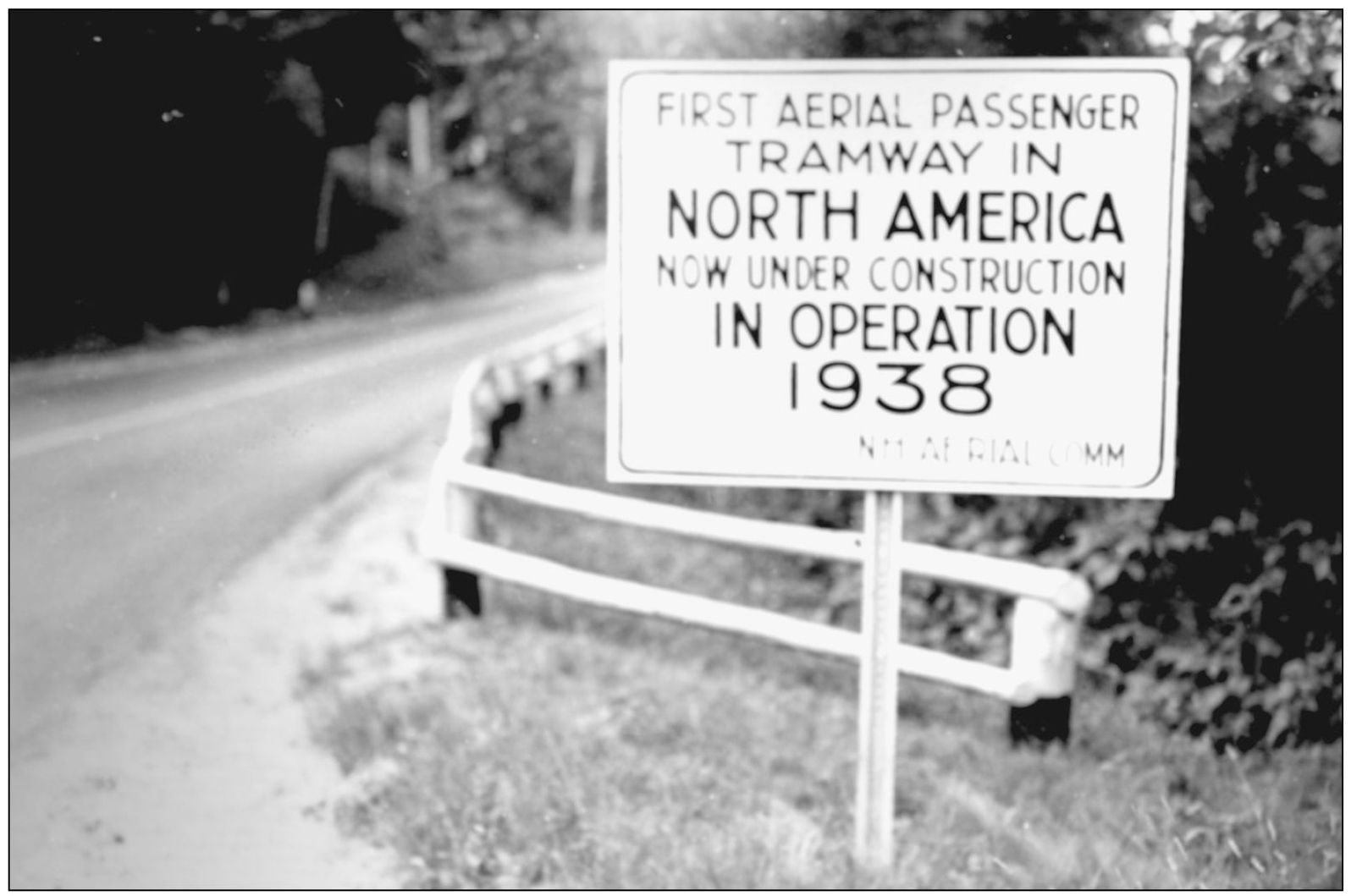
The sign on the road north to Cannon Mountain created excitement for visitors waiting for the new marvel of the tram—quite common in Europe—to be in operation in the United States.
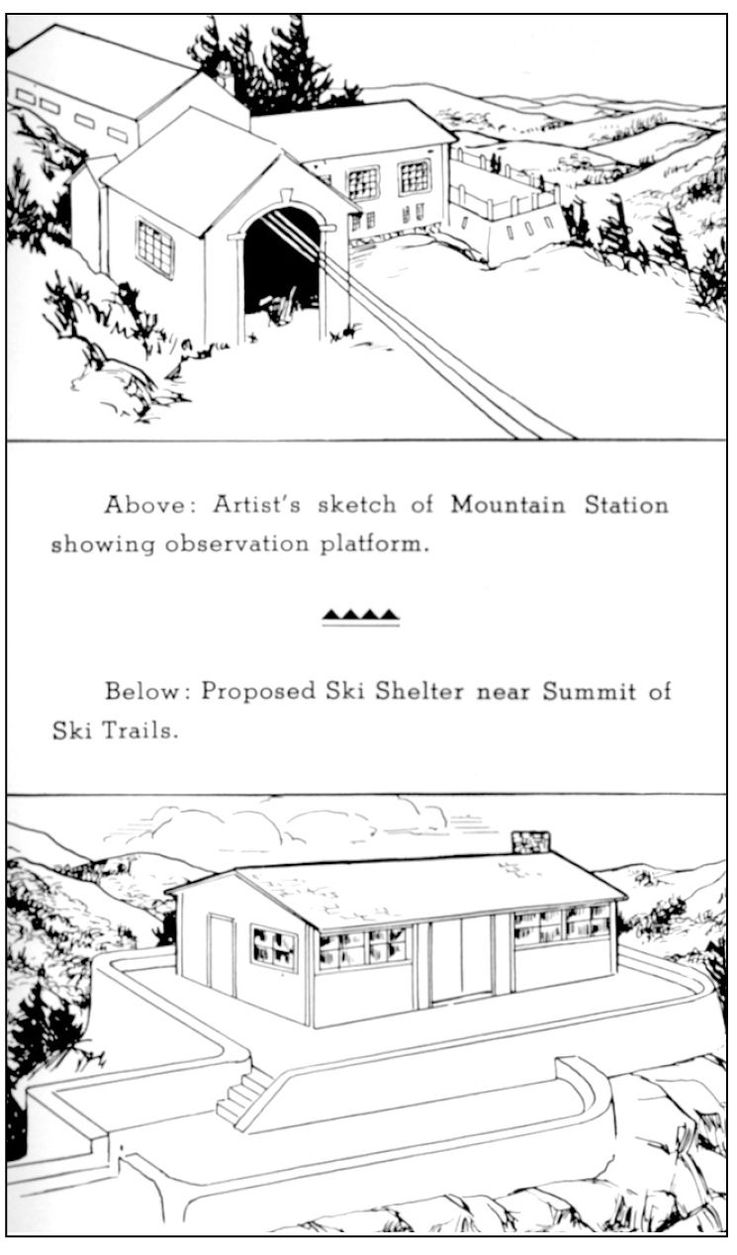
These are two sketches of the proposed Cannon Tram buildings. The lower terminal held a waiting room, soda fountain, rest rooms, ticket counter, and manager’s office. The upper terminal contained a writing and reading room besides providing storage space for deck chairs. Summer thoughts were in the designers’ heads rather than winter practicalities.
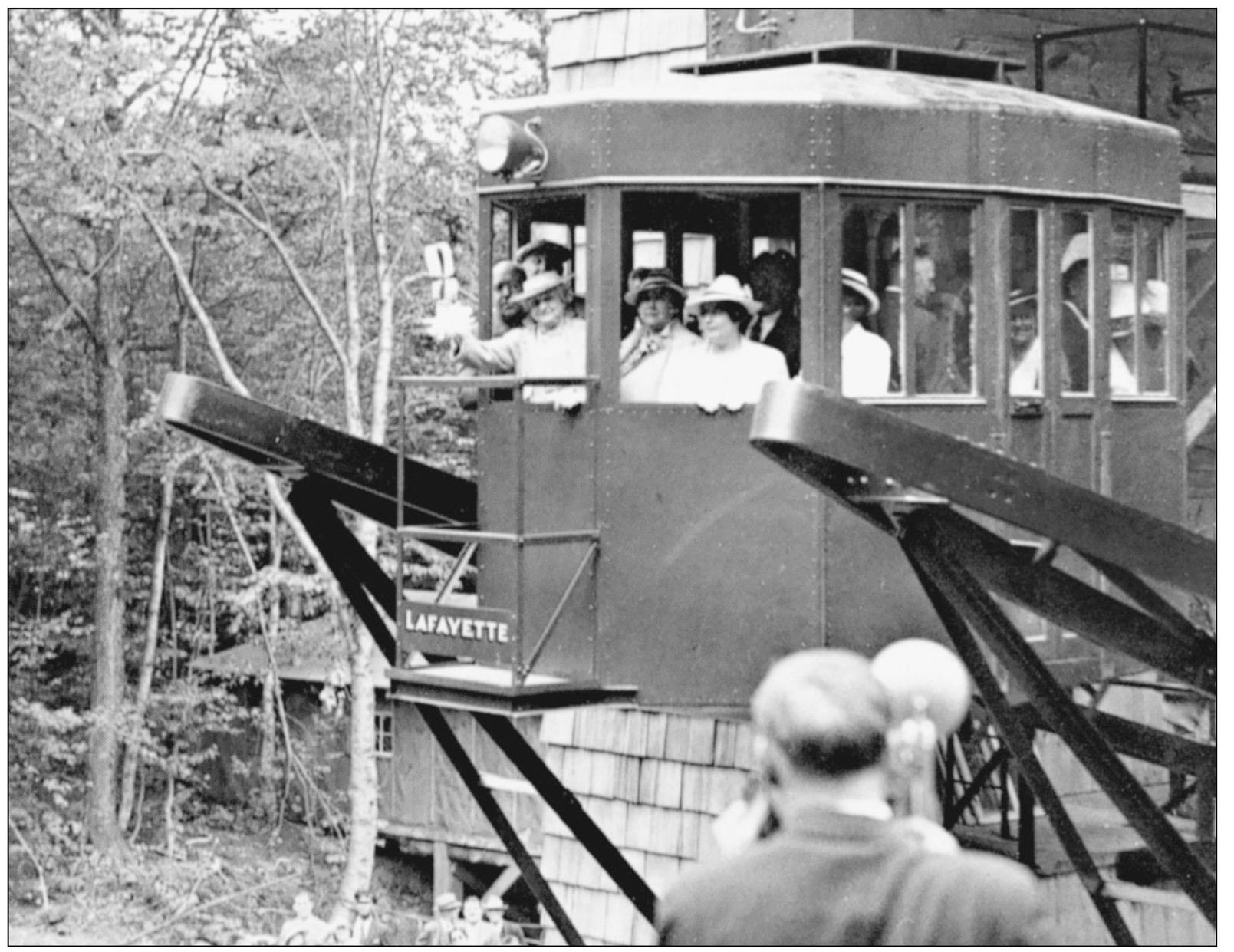
Christening the Lafayette, one of the two 20-passenger cars of the Cannon Tram on June 28, 1938, is Mae Murphy, wife of the governor of New Hampshire, Francis P. Murphy.
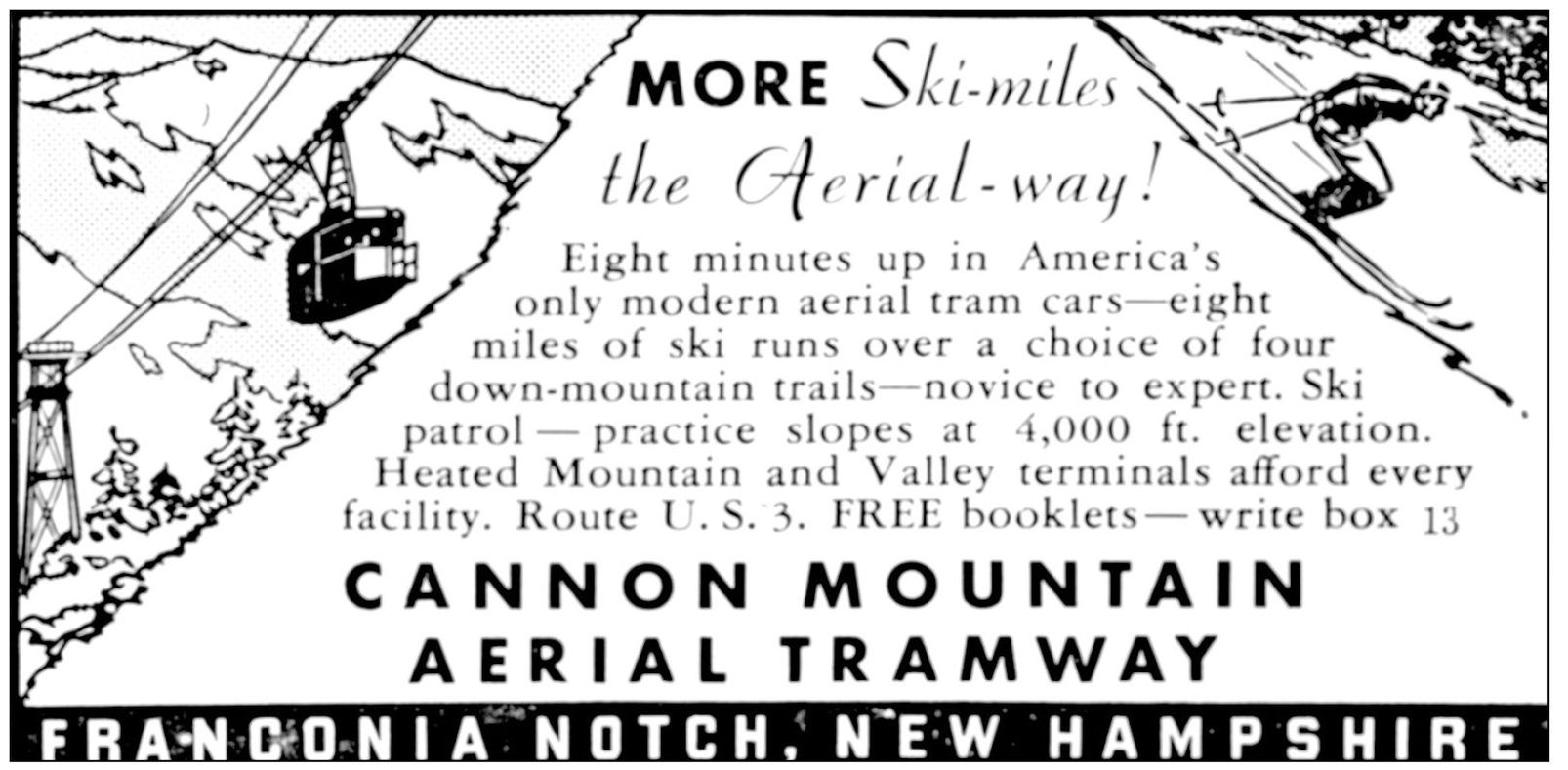
The great appeal of the tram was that it covered close to 2,000 vertical feet in only eight minutes to the top of Cannon. Prior to the tram, you could expect to get only two or possibly three runs in a day.
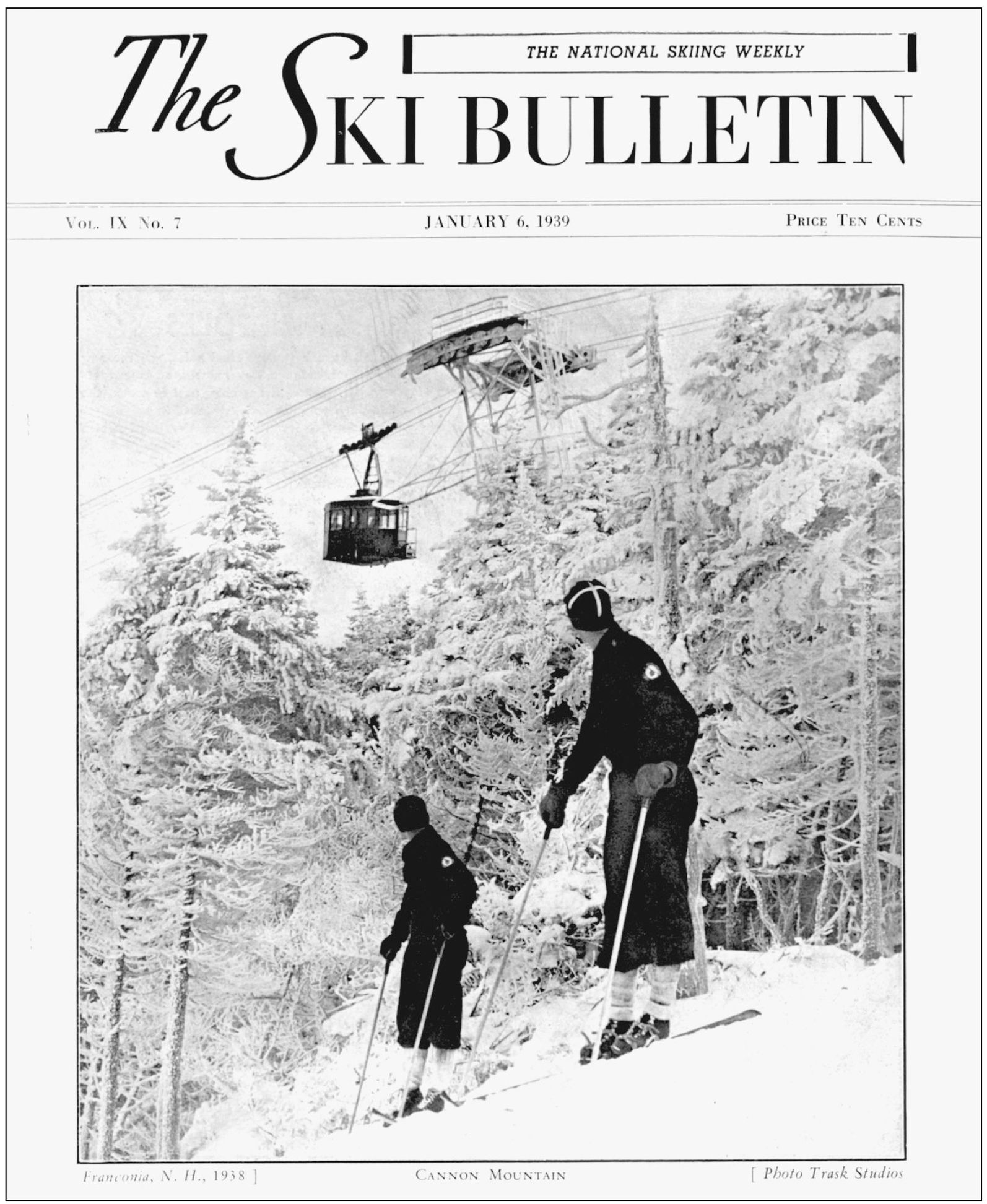
Charles Trask, one of the early notable ski photographers, took this photograph at the beginning of the first winter of the tram’s operation.
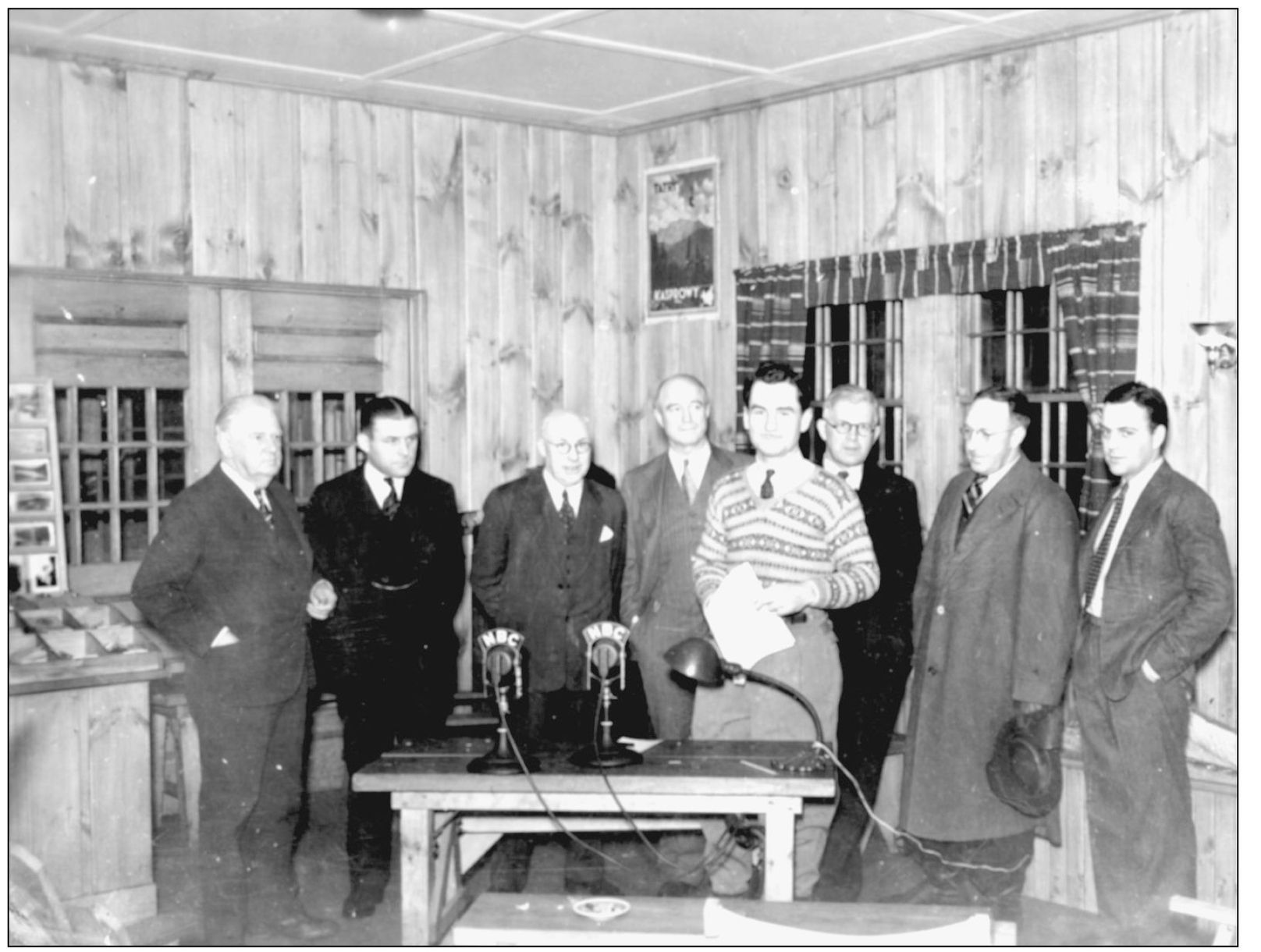
Famed broadcaster Lowell Thomas, here depicted at Cannon Mountain, advertised skiing as a sport on NBC radio. He made much of the ski center from which he was broadcasting, told a little of its history, and what fun and joy there was to be had sporting on the snow.
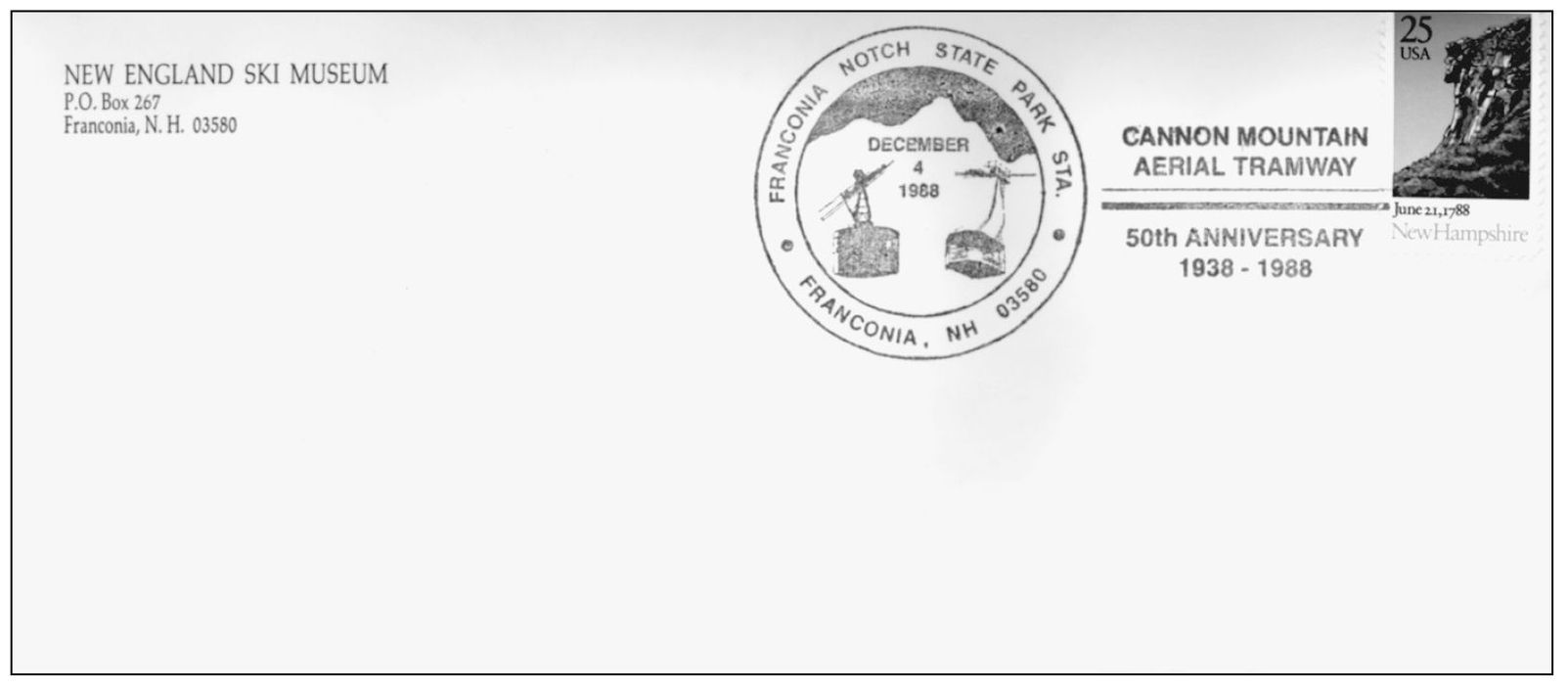
The New England Ski Museum, guardian of the state’s skiing heritage, used this special postmark on the tram’s 50th anniversary, along with the Old Man on the Mountain stamp on the 200th anniversary of New Hampshire’s ratification of the Constitution of the United States, to send out its message as a real heritage keeper.
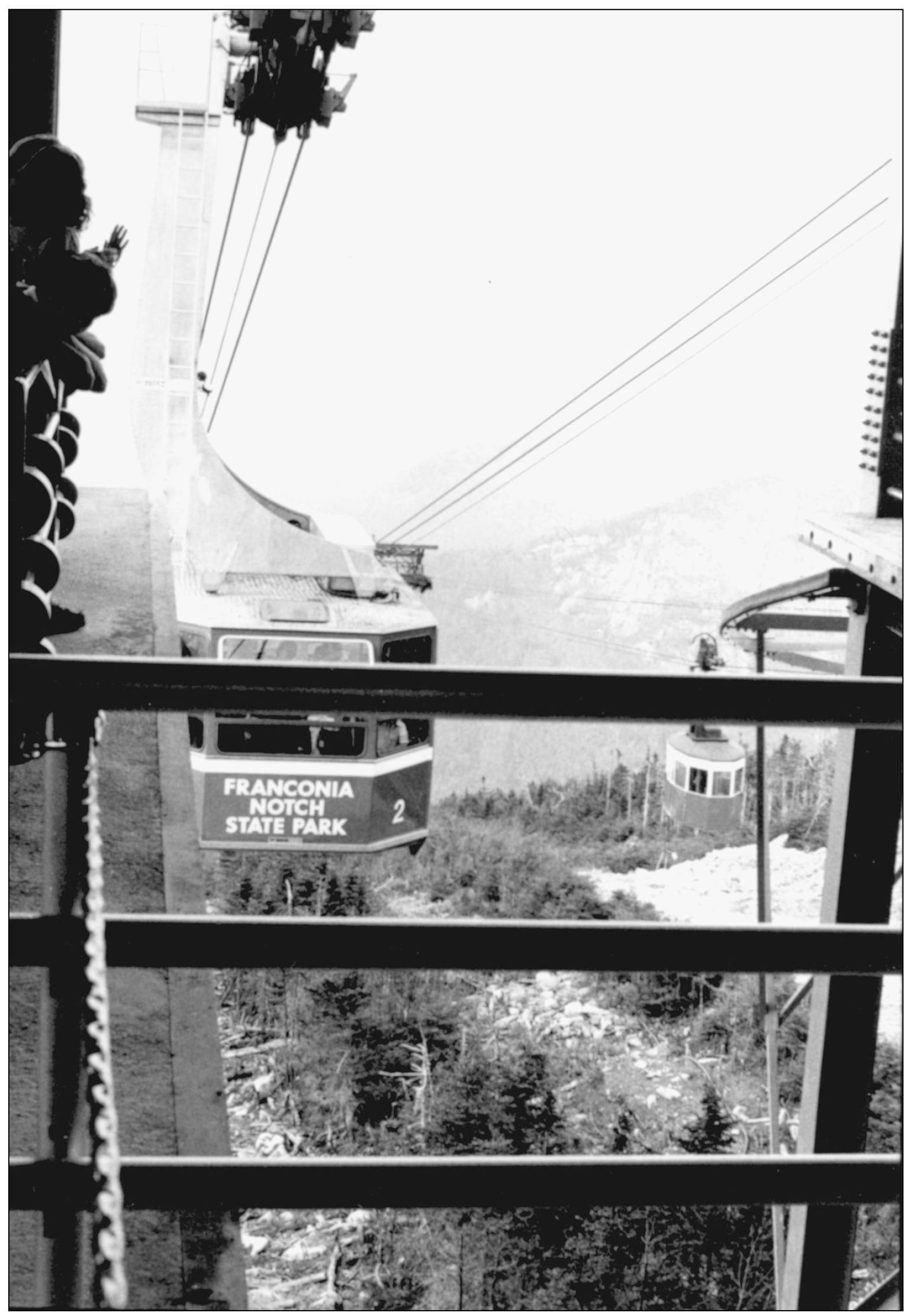
After 42 years and about six-and-a-half million passengers, the original tramway was retired (one of the cabins is now located at the entry of the New England Ski Museum), and the new 70-capacity tram took over in 1980.
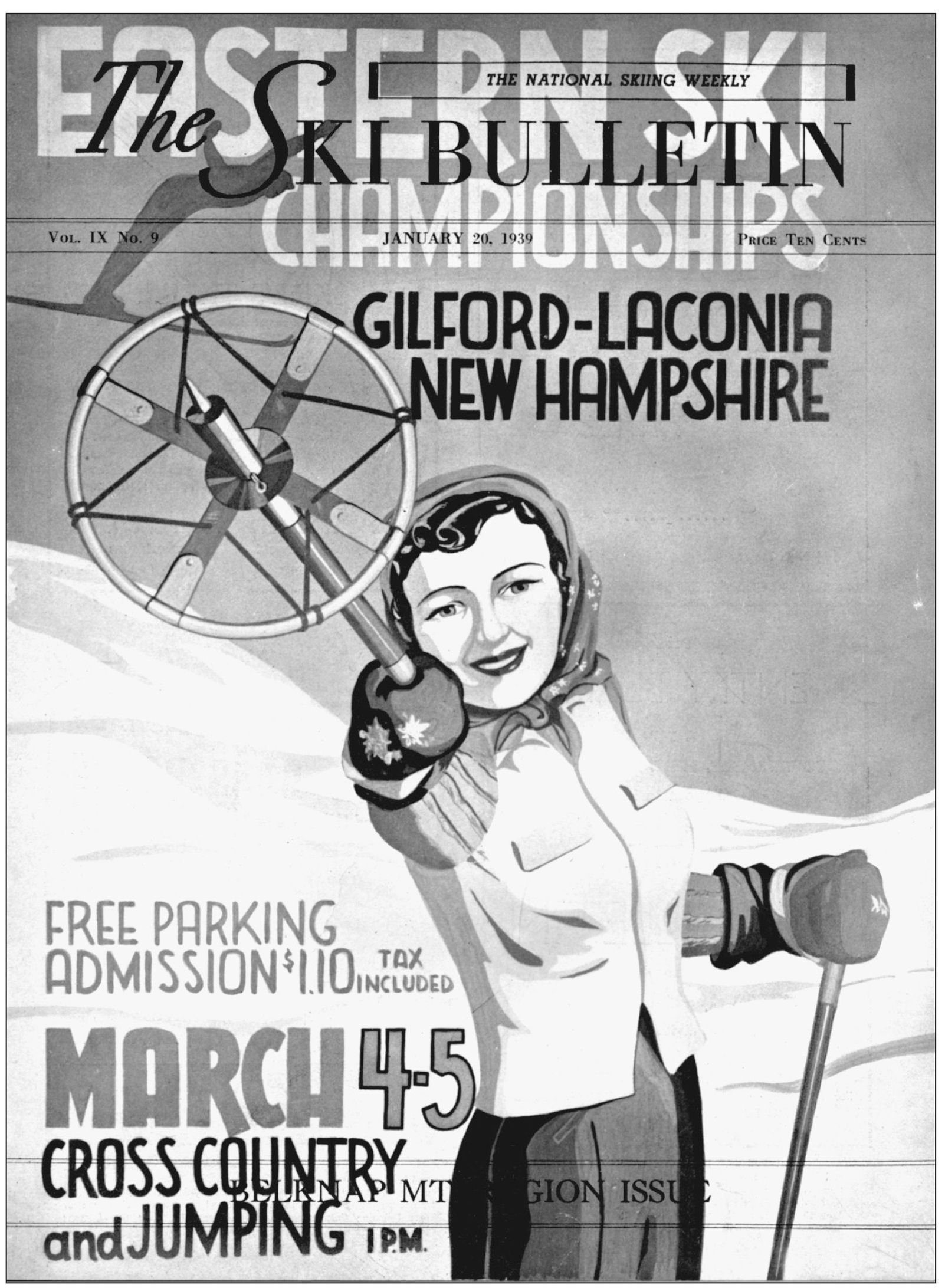
The Ski Bulletin was the AMC’s informative information issued weekly. The Eastern Ski Championships in 1939 at the Belknap Recreation Area were, in fact, only for cross-country and jumping, yet the woman advertising the meet is dressed for recreational Alpine skiing. Alpine events were held at Stowe.
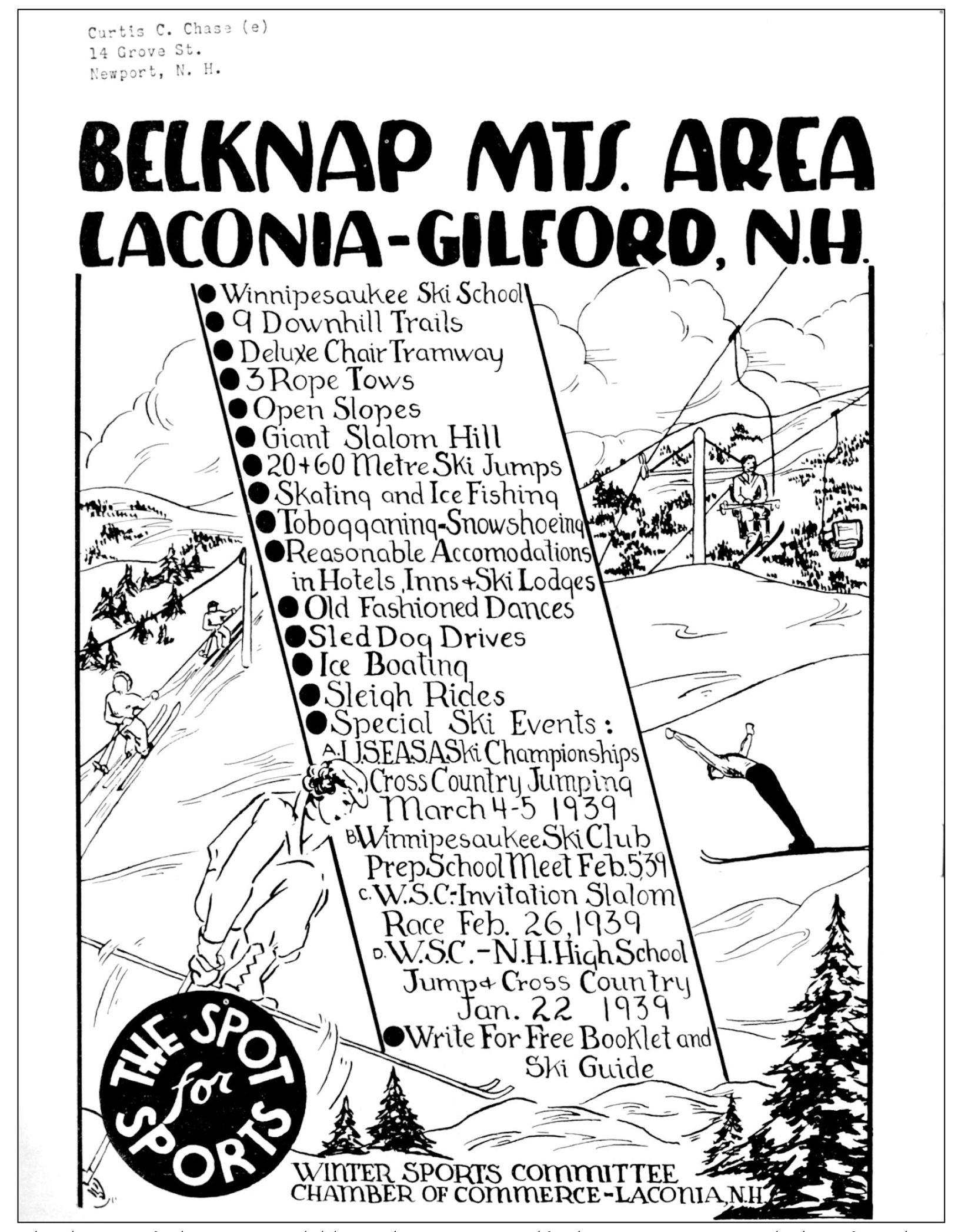
This listing of what was available in the Laconia-Gilford region gives a good idea of just how important winter tourism had become by 1939.
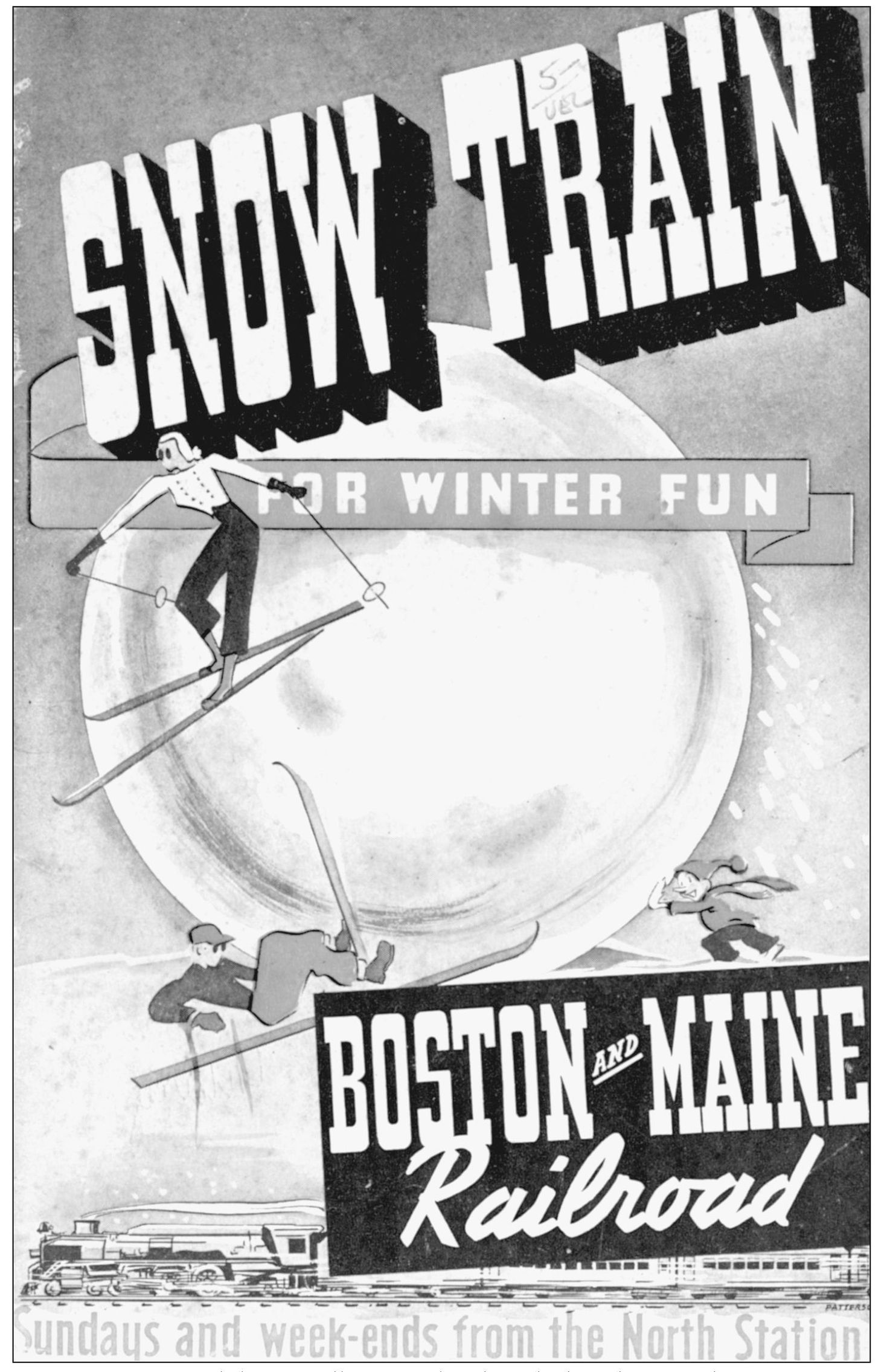
Winter tourism increased dramatically on weekends with the advent of the Snow Train from Boston’s North Station. Organized by the AMC and the Dartmouth Outing Club of Boston, the first train carried 197 sports to Warner on January 11, 1931.
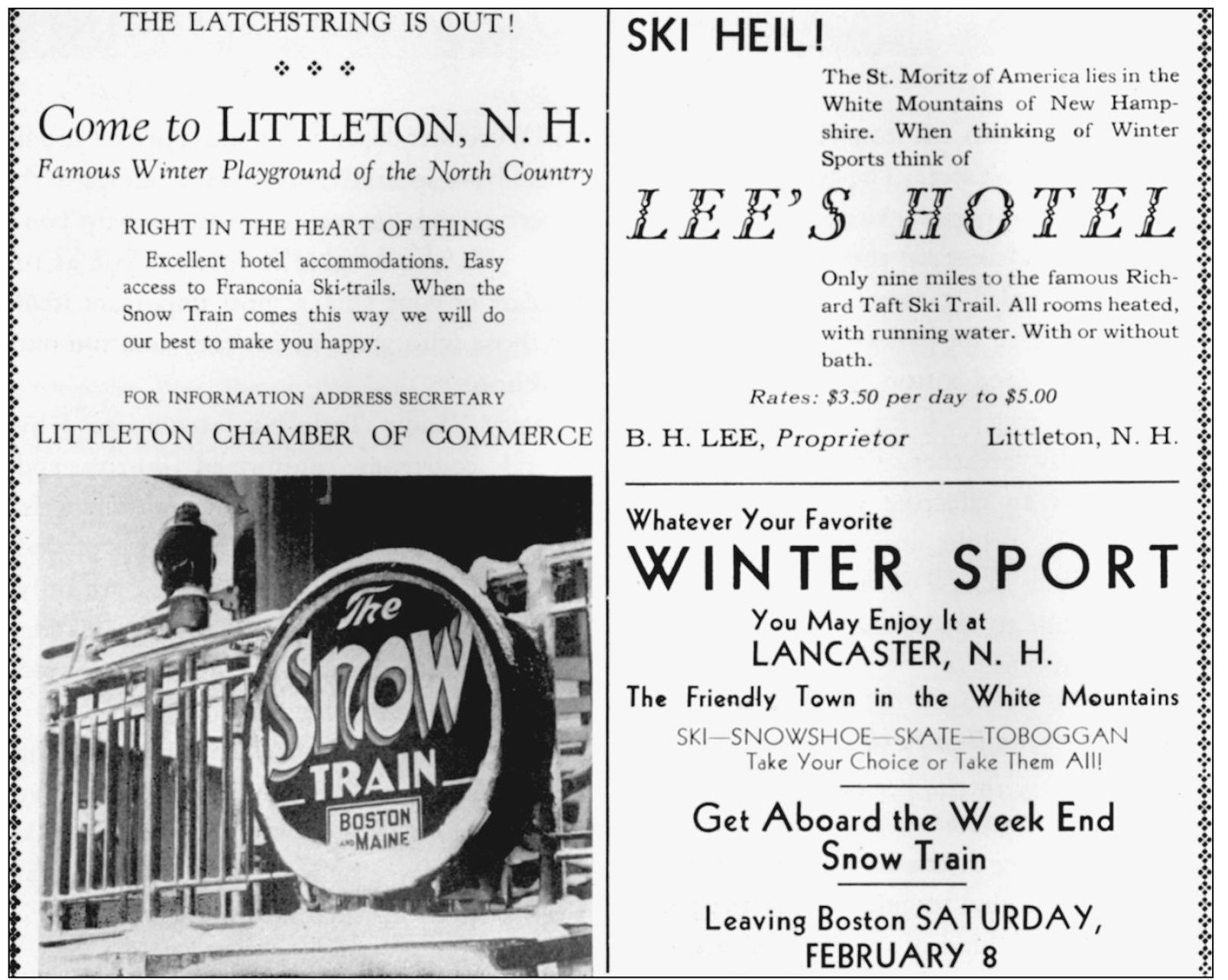
The Snow Train was a regular winter weekend phenomenon from 1931 to World War II, first from Boston and then from New York City. Advertising paid off for towns and hotels near ski destinations along the line north.
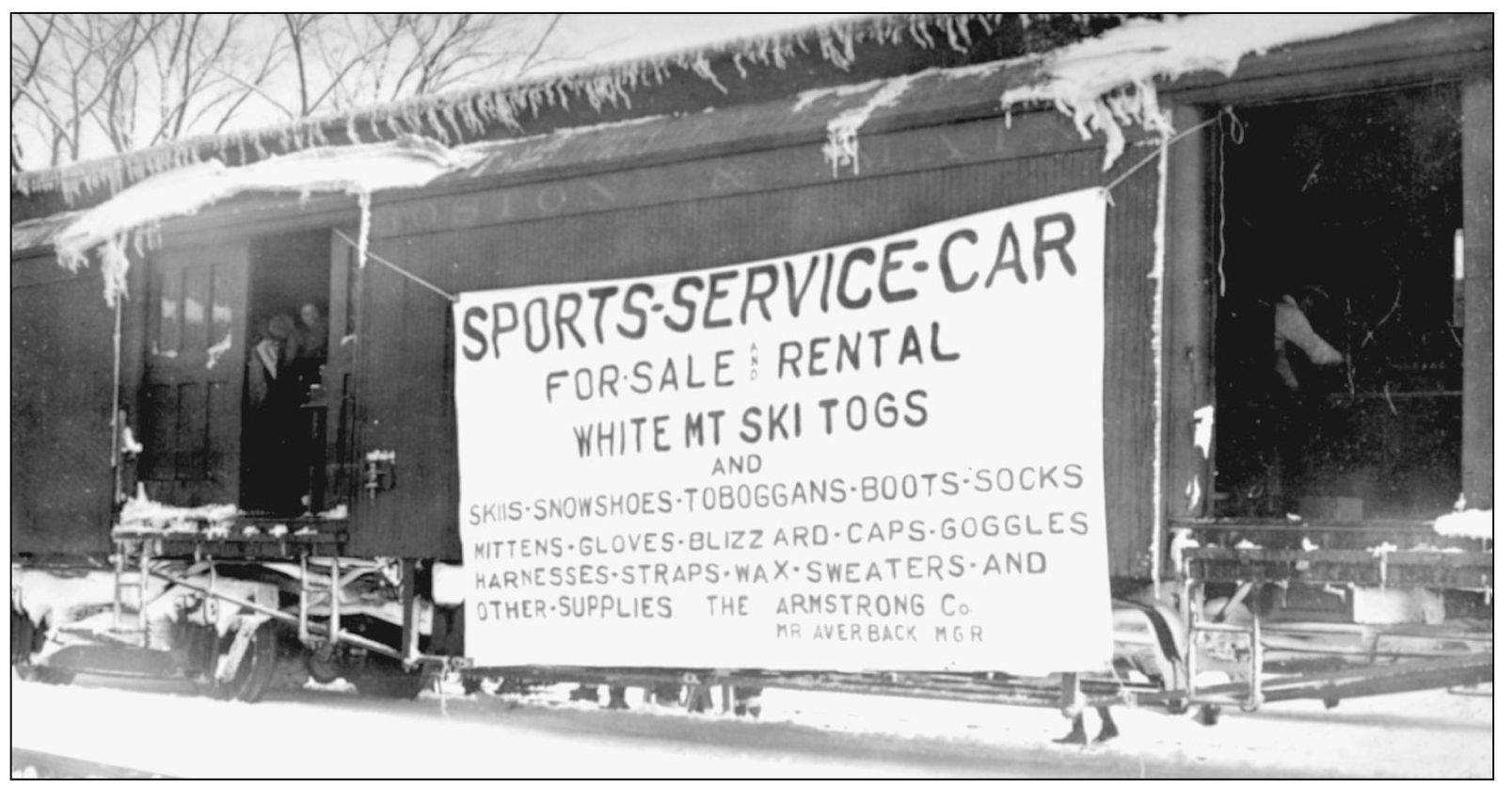
The Snow Train itself soon became something other than mere transportation. You could walk off the street in Boston and be fully equipped by the time you reached New Hampshire’s hills, sometimes even signed up with a ski instructor who was already aboard.
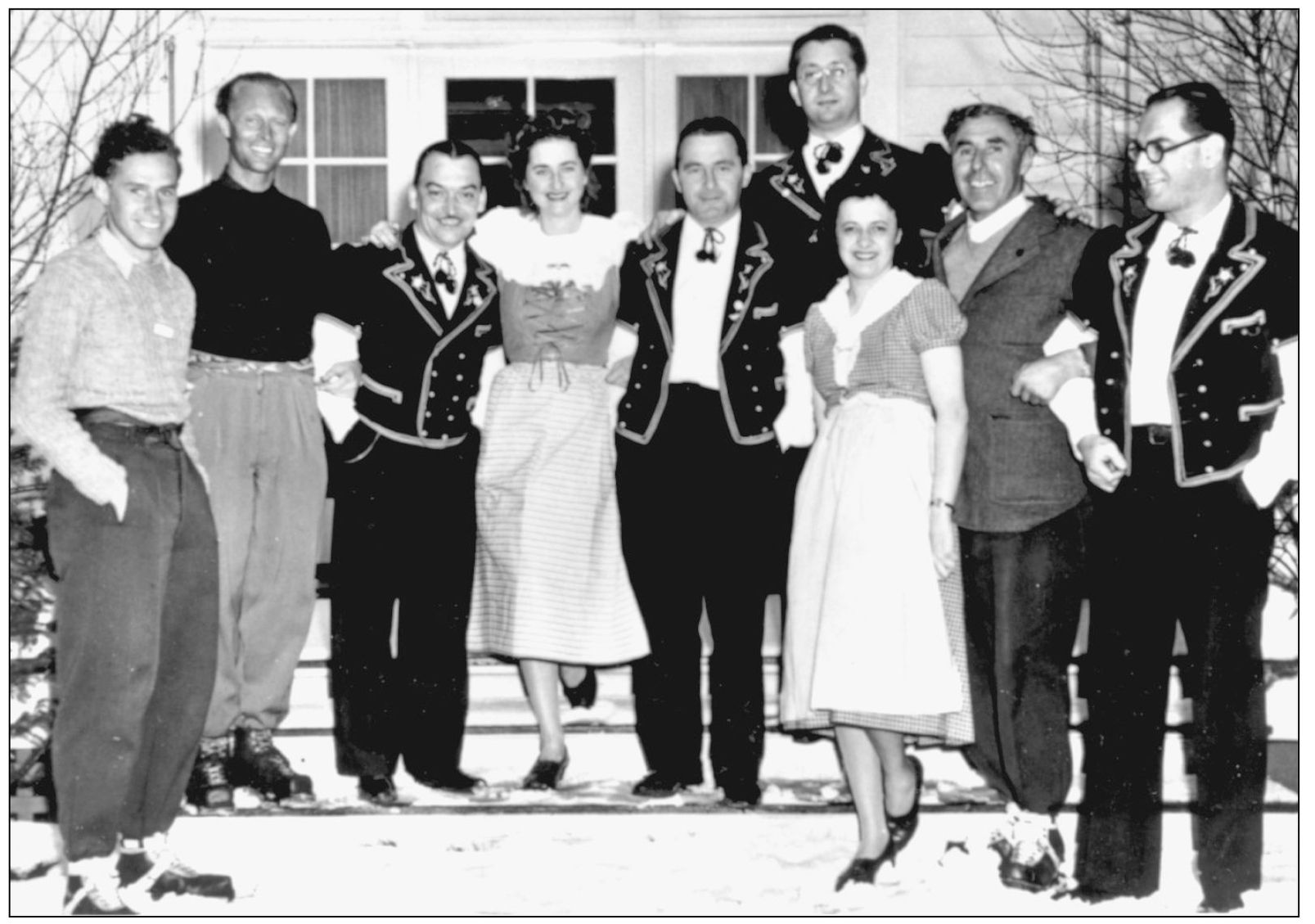
Evening fun was provided at the Eastern Slope Inn by Charlie Zumstein’s authentic Austrian orchestra. They are shown here flanked by famous instructors young Herbert Schneider and Benno Rybizka, and second from the right is Hannes Schneider.
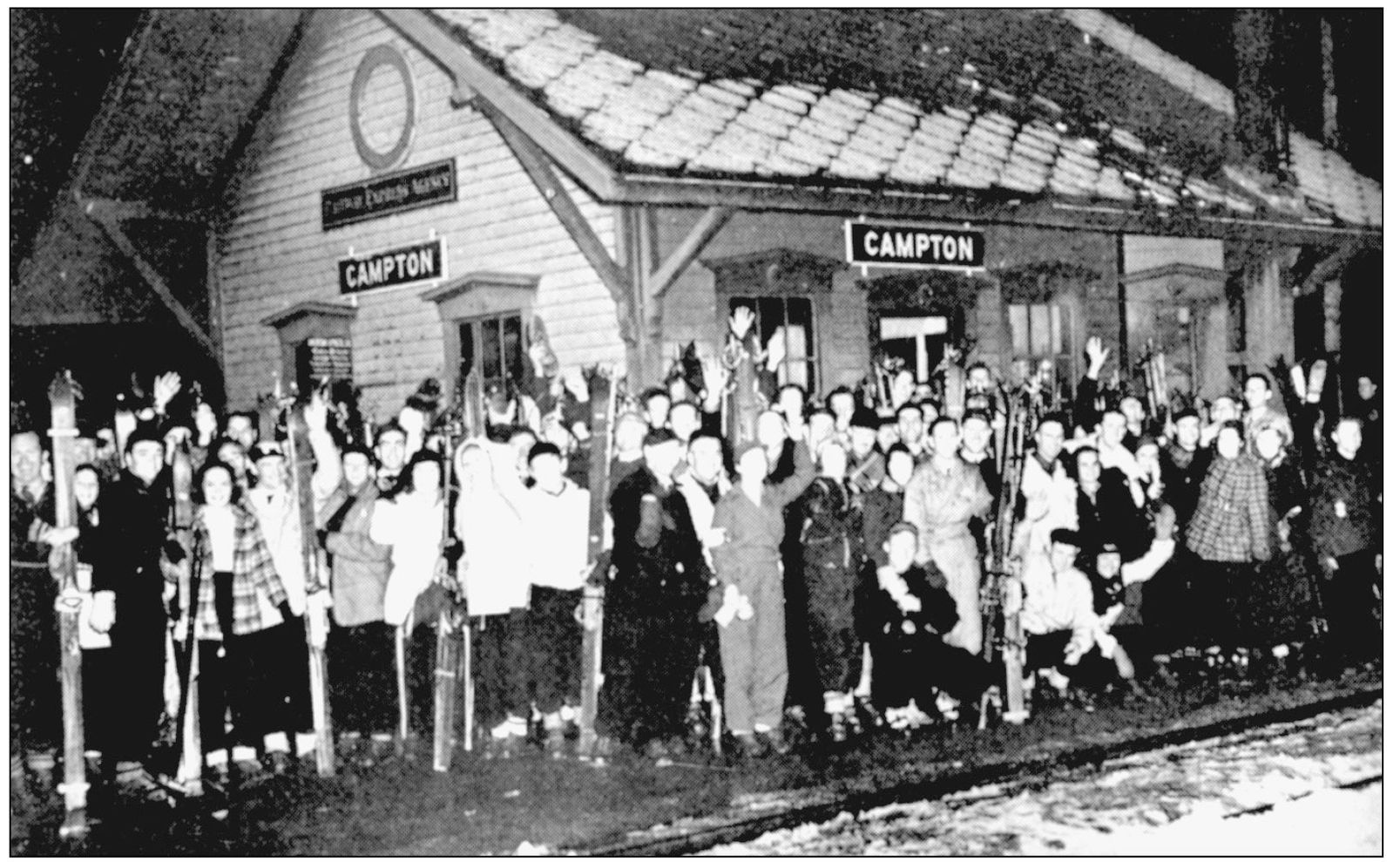
This happy and weary crowd is waiting at Campton for the Boston and Maine’s return to Boston. With wartime gasoline rationing, the railroad gave many skiers the chance to play in New Hampshire’s hills.
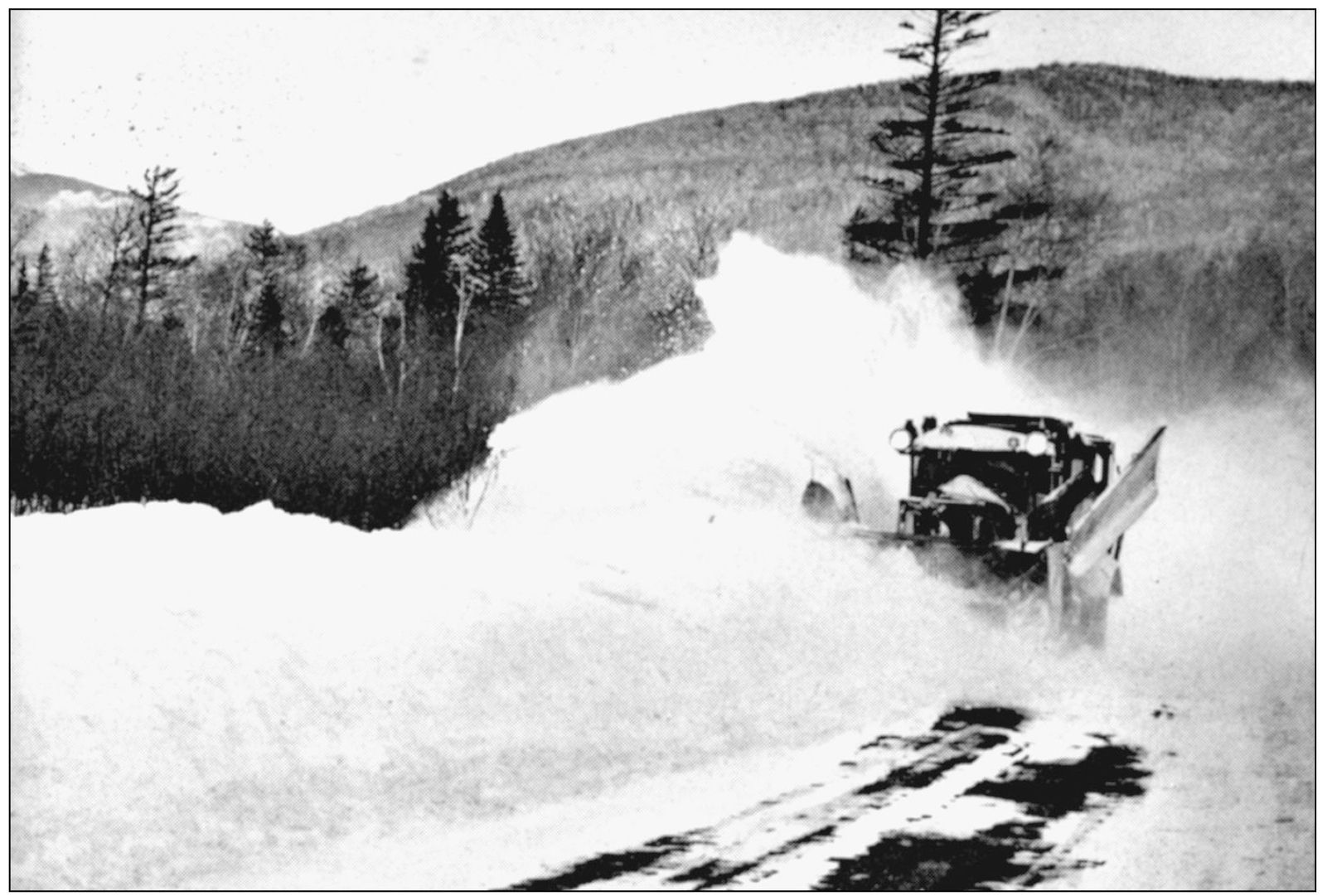
Increasingly in the 1930s, more winter enthusiasts came north in their cars. The state kept Pinkham and Franconia Notches open from 1926 on.
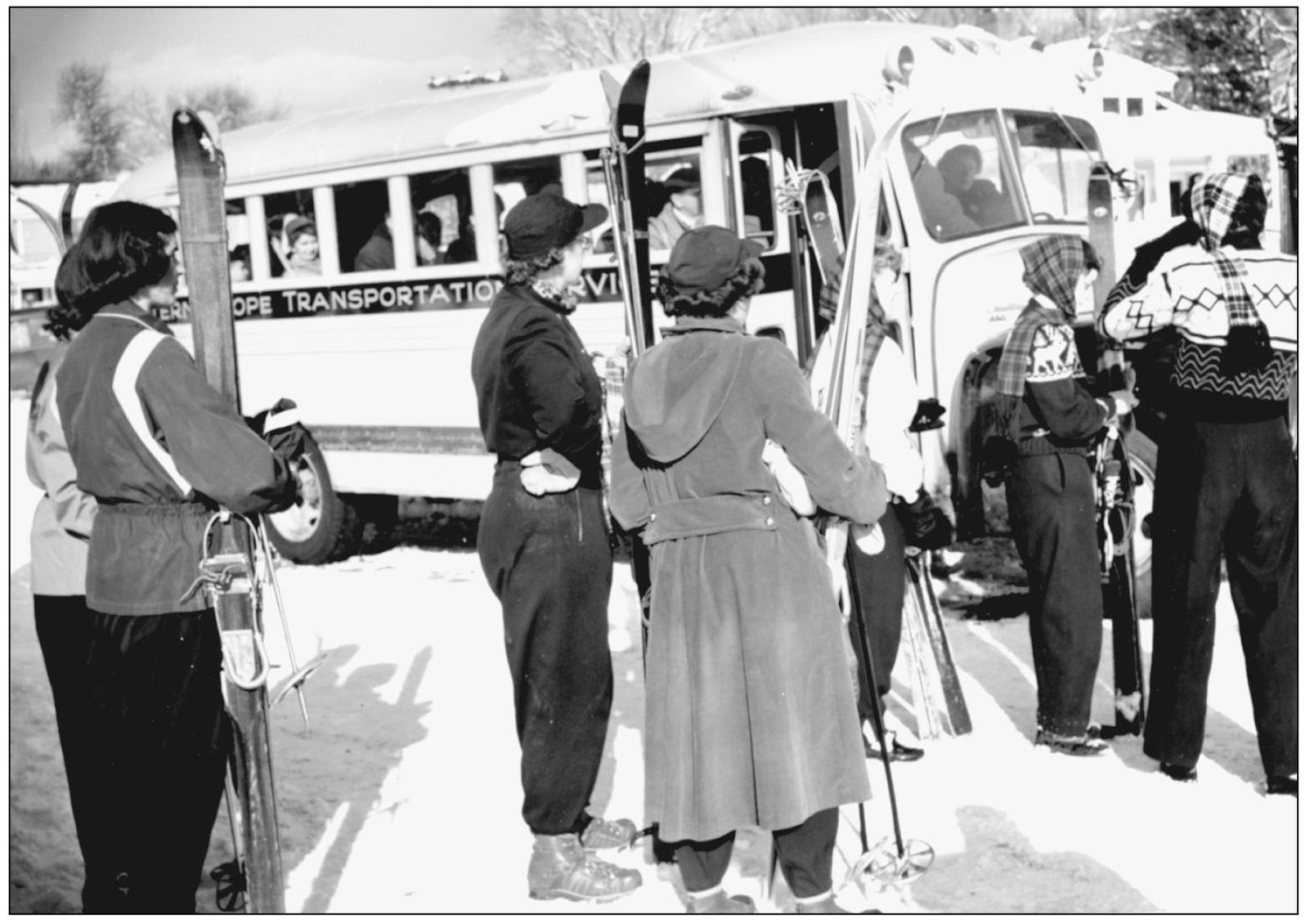
Once at the North Conway station, visitors would be taken to Jackson or Cranmore Mountain by buses of the Eastern Slope Transportation Service.
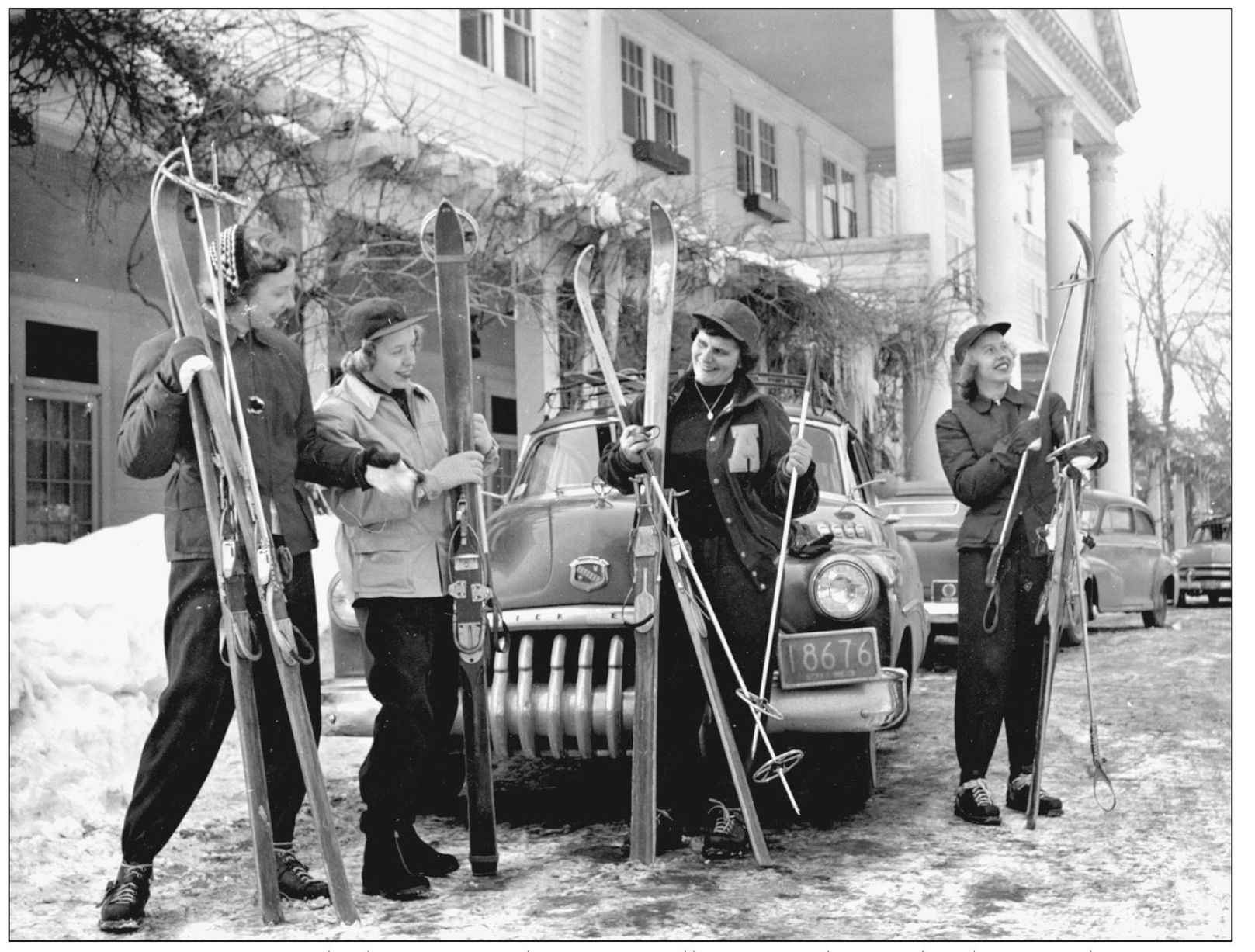
A group of women outside the Eastern Slope Inn is all set for a day on the slopes in the 1940s.
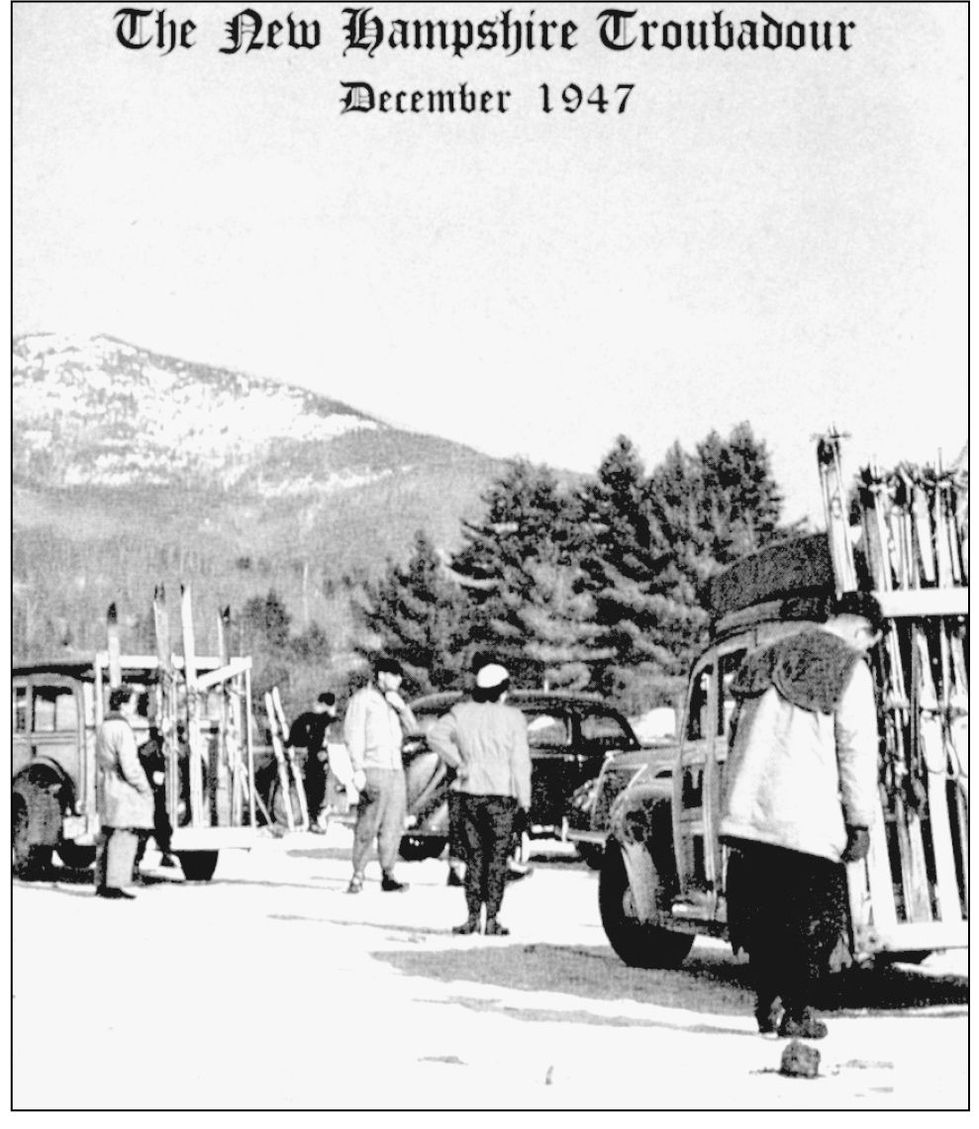
Ski racks were often personal inventions in the 1930s. A decade later, manufacturers saw a market and produced side racks, overhead carriers, and these contraptions for the backs of cars.